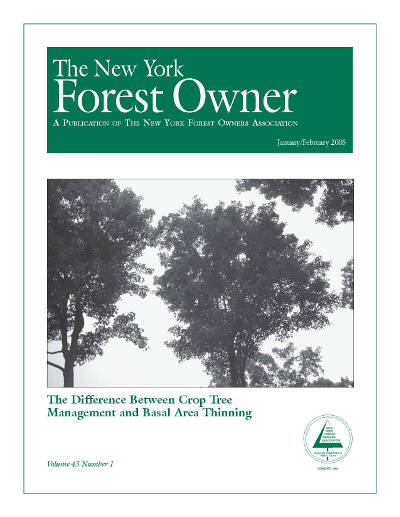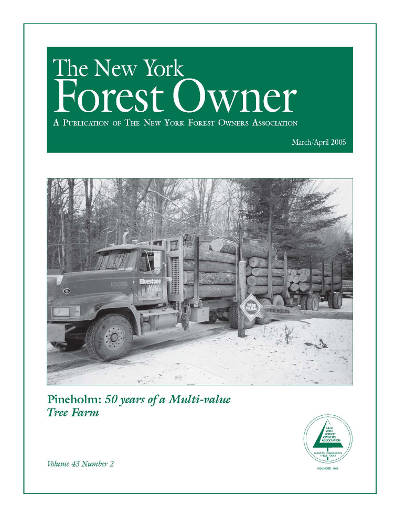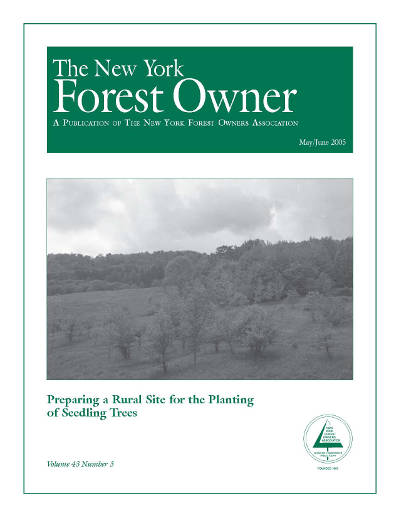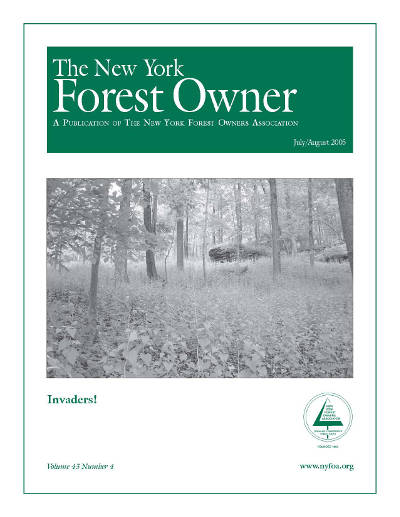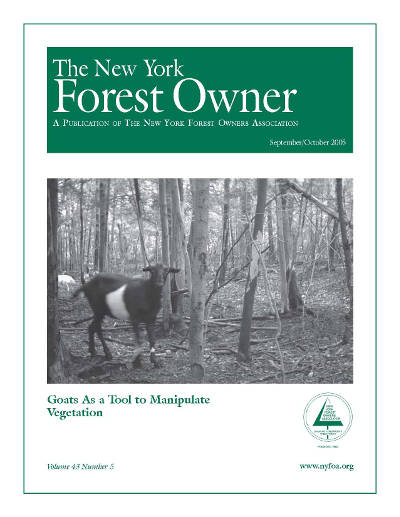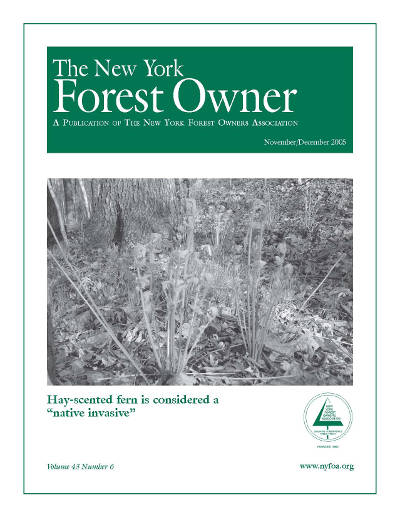Skip to content
In the Mail: Readers react to previous letter on compensating consulting foresters Ask a Professional: What is the difference between crop tree management and basal area (or area wide) thinning? Compensating Consulting Foresters HOW TO: Manage a Woodlot for Firewood NYFOA General Director Candidates 43rd Annual Spring Meeting Arranging a Timber Sale Douglas C. Allen: Peach Bark Beetle – Results of Research and News of Work in Progress DEC Proposes Changes in Cooperating Forester Program Avoid Trespass During Hunting Season Know Your Trees: White Spruce In the Mail: Reply to debate on compensating a consulting forester HOW TO: Protect Newly Planted Seedlings Ask A Professional: How can I manage my woodlot to provide optimal habitat for Wood Thrush and Cerulean Warbler? PINEHOLM: 50 years of a Multi-value Tree Farm Debbie Gill Steps Down Douglas C. Allen: Maple webworm is often prevalent during forest tent caterpillar outbreaks No-Op to Co-Op News & Notes: Forest Stewardship Short Course; Free Seedlings; Chapter Membership Growth Award Know Your Trees: Balsam Fir From the President: 2005 will be a year of significant changes for NYFOA In The Mail: Great Article; NYFOA Spring Meeting HOW TO: Implement Forest Farming Practices Ask a Professional: How do I prepare a rural site for the planting of seedling trees? Trends in New York Stumpage Prices Special NYFOA member tour at the Big Flats Plant Materials Center Planning the Future Forest Wild Things in Your Woodlands: Chestnut-Sided Warbler Acorn Planting To Know a Tree Commentary – New York’s Forest Tax Laws Ecology: Ginseng Threatened by Bambi’s Appetite The Chronology of a Forest Steward – 2004 Woodlot Calendar Know Your Trees: Eastern Hemlock From the President: Property Tax Growth; Next Executive Director In the Mail: Great Article HOW TO: Manage Vole Damage Ask A Professional: I would like to manage a woodlot to restore production to an old sugarbush, a project I will use in retirement. I think some trees need to be culled and thinned. How should I proceed? Invaders NYWS/NYFOA MERGER COMPLETED Position Announcement: EXECUTIVE DIRECTOR, New York Forest Owners Association (NYFOA) Pond Management- Control of Aquatic Weeds Wild Things in Your Woodlands: Eastern Newt Douglas C. Allen: The Large Carpenter Bee – A Different Kind of Wood Borer Portable Skidder Bridges Made Easy The Palm Family- 2005 Outstanding Tree Farmers Know Your Trees: American Larch From the President: Working with other forestryh organizations; update on Executive Director search team; effects of increasing heating costs In the Mail: NYFOA Members Show Your Colors! HOW TO: Improve Hardwood Forests— One Seedling at a Time Ask a Professional: I’ve heard conflicting recommendations on whether I should girdle trees. What do I need to consider about girdling? Northeastern Extraordinaire Kid’s Corner: Eastern Screech Owl Cornell Cooperative Extension Releases- New Agroforesty Marketing Guide Cornell’s “Other” Ag Experiment Station Works To Improve The State’s and Region’s Forestry Resource An Outburst of Lecanium Scale – a Sticky Business Cornell Cooperative Extension Releases- New Agroforesty Marketing Guide Fencing To Exclude Deer News & Notes: Expanded Forest Owner Field Day Keeping Your Chainsaw in Shape Know Your Trees: Northern White Cedar From the Executive Director: Incoming director’s plans In the Mail: We need your input to the 2007 Farm Bill; Revising NYFOA’s By-Laws HOW TO: Protect Trees from Winter Damage Ask A Professional: What ecological effect does hay-scented fern have on the forest? Are there any non-chemical strategies that will control the fern? New Executive Director for NYFOA Wild Things in Your Woodlands: Black Bear Why 480-A Works – And How Not to Fix It Someday… When You Can’t Hear So Well Douglas C. Allen: Sirex noctilio – An introduced wood-boring wasp Forest Food: Mast INDEX: The New York Forest Owner – 2005 Volume 43, Numbers 1-6 Know Your Trees: Red Cedar
Post navigation

